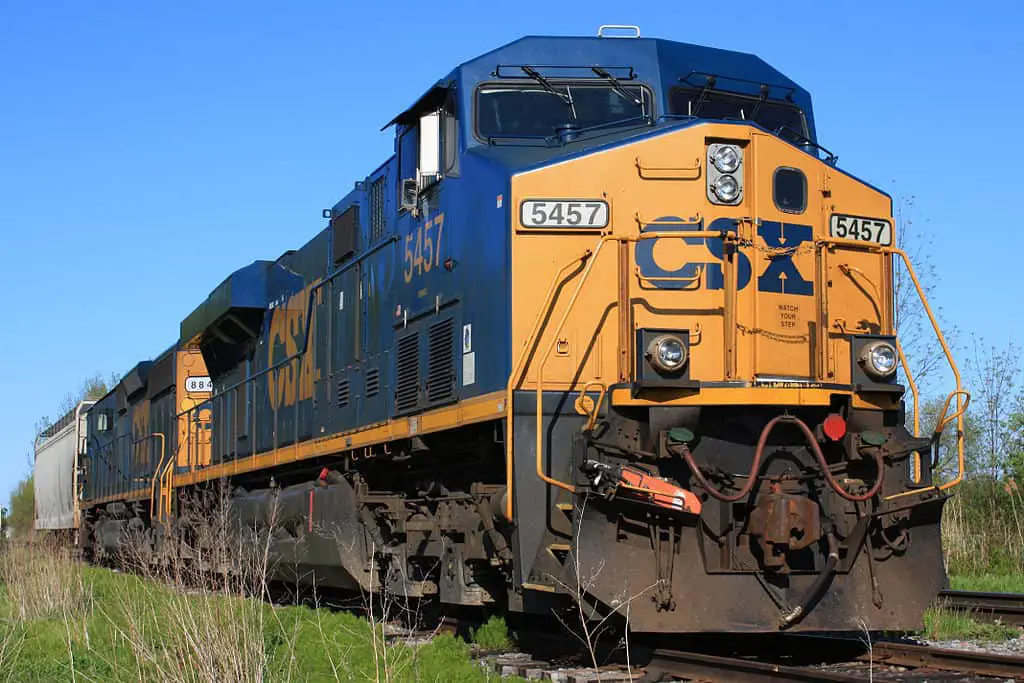So how much torque does a train have? Most of the freight trains in the United States are diesel-electric powered, where most of the passenger trains are electric powered.
Simple answer: Between 25,700 ft-lb and 35,014 ft-lb.
Today you will find out how much torque a train has, by train I mean a locomotive also known as an engine, since the train is powered by the locomotive.
Before we proceed further, I want to address your question from a different angle and let you know that torque is not as important for a locomotive as it is for a vehicle.
The torque is a measure of how much force acting on an object that causes the object to rotate about an axis, the force required to torn or twist an object.
Torque = Force × Radius
The locomotives today have an electric transmission, which enables the use of the maximum horsepower output at any moment.Locomotive power is measured by the tractive effort, which is highest at lowest speed so the torque is essentially the tractive effort.
However if you want to measure the locomotive torque you can apply this formula: Torque = HP x 5252.11 / RPM.By Pi.1415926535 – Own work, CC BY-SA 3.0, Link

Example, The Most Powerful US Freight Locomotive – GE AC600CW
As a first example, we will look at one of the most powerful freight locomotives used in the United States, the GE AC6000CW.
What do you need to know about the GE AC6000CW?
The GE AC6000CW is built by, you’re right, General Electric and it’s one of the most powerful locomotives in the world.
The AC6000CW came out as a result of a “race” between two major locomotive manufacturers, the GE and the Electro-Motive Division of London, Ontario in the early 90s.
As mentioned above, the AC6000CW is a super powerful locomotive, using 16 cylinders, it has an output of 6000 horsepower and a tractive force of 188,000 lbf at starting.
So how much torque does a train have? Calculated at maximum engine speed.
Simple answer: Between 25,700 ft-lb and 35,014 ft-lb.
How did I reach this conclusion? I applied the above mentioned formula where locomotive torque equals the horsepower multiplied by 5252.11 and divided by the rotations per minute.
The AC6000CW locomotive has a torque of 35,014 ft-lb, remember Torque = 6000 x 5252.11 / 900. The RPM is ranging between 200-1050 for this specific locomotive, remember we calculate the torque at the maximum speed.
That’s pretty interesting isn’t it?
Let’s calculate what is the torque for a ES44AC locomotive, which has the maximum output of 4400 horsepower.
Applying the same formula we get that the train has a torque of 25,700 ft-lb at 900 RPM.
Since this can go forever, with hundreds of locomotives out there, let’s switch our focus on the passenger trains/locomotives.
By John Mueller – Flickr, CC BY 2.0, Link
How much torque does a passenger train have?
In our example we will discuss the well known Siemens Charger, the model was designed to haul passenger cars.
This locomotive has an output of 4,400 HP as well as the freight one discussed above, but the tractive effort is way less, and the torque is quite equal or even stronger than the freight train.
Proving the point of irrelevancy I specified above.
So this particular train, the Siemens Charger outputs 4,400 HP with a RPM range of 600-1800, and a tractive force of 65,000 lbf at starting, which is 120,000 lbf less than the AC6000CW.
Yes , 120,000 lbf less, so AC6000CW has three times more pulling power than the Siemens Charger while their torque is equal or even higher for the Siemens, let’s calculate.
Remember the formula to calculate how much torque does a train have?
Torque = HP * 5252.11 / RPM
So, torque equals 4,400HP multiplied by 5252.11 and divided by a RPM between 600 and 1800 gives the same output of torque at 900 RPM as for the GE ES44AC which is 27,700 ft-lb, now the passenger train runs at higher speeds which means higher RPMs, at 1700 RPM the torque would be approx. half.
I hope this article answered your question of how much torque does a train have, if you have any questions, let me know

